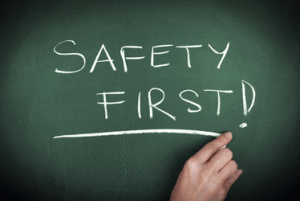Carbon monoxide is known as the silent killer because it has no smell, taste, or color. Therefore, it can kill without warning. As a matter of fact, carbon monoxide poisoning is one of the leading causes of unintentional poisoning deaths.
Carbon monoxide leaks are often caused by faulty heating systems and ventilation problems. The HVAC safety tips below will help you prevent these deadly leaks from occurring.
Check Your Vents
Blocked vents prevent the heat from your furnace from blowing out effectively. Moving furniture around could block your vents. Or, maybe you intentionally close the vents in unused rooms to try to save money. Unfortunately, closed vents can do your home — and your family — more harm than you realize. They can result in:
Duct leakage
Low airflow, which could lead to comfort problems
A cracked heat exchanger, which can let carbon monoxide infiltrate your home
Check the heating vents around your home to ensure nothing is blocking them.
Schedule Regular Maintenance
At least once a year, ideally before winter sets in, you should have your furnace, fireplace, vents, and chimneys inspected by a professional. The fumes from a furnace that isn't working properly could leak into your home. Dust and debris can collect in your vents over time and clog them. Clogged vents and chimney flues can result in carbon monoxide leaking into your home.
During maintenance, the professional will check for proper operation and safety and clean your heating system. He or she will spot potential problems before they become bigger and cause carbon monoxide problems.
Have the Heat Exchanger Inspected
The heat exchanger vents out the poisonous gases produced by heat combustion. Carbon monoxide can make its way through your home's ventilation system if the heat exchanger develops holes, cracks, or corrosion.
Verify that your HVAC technician has inspected the heat exchanger during a routine maintenance visit. That's because many visits usually don't include a heat exchanger inspection.
Taking the precautions above will save you money on energy costs in addition to protecting your family from carbon monoxide poisoning. Contact us at Air Assurance if you need expert heating services for your Broken Arrow home.







